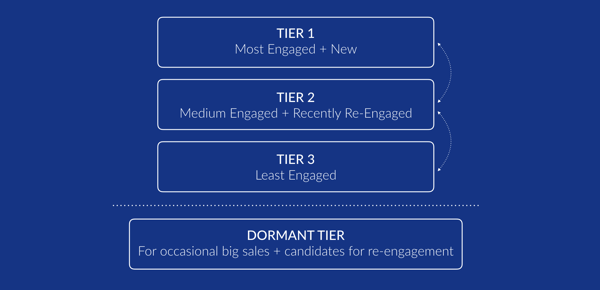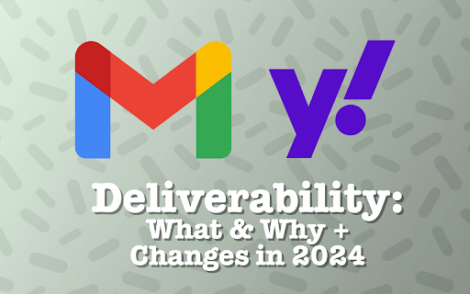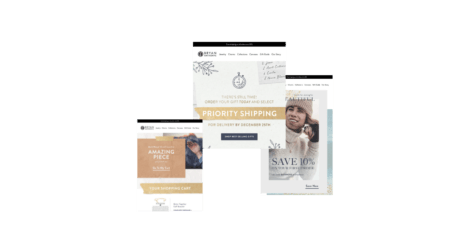With 1.5 billion Gmail users worldwide, it is highly likely that a significant part of your subscribers are using Gmail. There’s been a lot of buzz lately around email deliverability and particularly how engagement rates impact inboxing, so this post will guide you through the process of getting your email list cleaned up.
I’ll focus on those of you who are regularly sending out email campaigns but may not have done a list cleanse ever/recently. If you’ve never sent a campaign, it’s been a while since your last message or need help with list cleaning when you are migrating ESPs, get in touch and I’ll help you out too.
Why clean your list?
For starters, I’ll briefly go over the main reason why you even want a clean, engaged email list. Why not just send to every single email address on your list all the time to maximize volume?
Gmail has like 60% market share of consumer inboxes and is indisputably the biggest player in the space. Combined with its resources, algorithms, and promotional tabs, Gmail is unfortunately also one of the harder mail providers to achieve good deliverability with.
The primary direction that Gmail has been moving in for a while now, is towards using user engagement as a heavy weighing criterion in determining whether to deliver your marketing emails. Positive user engagement signals such as opening, clicking, starring/marking as priority, whitelisting, and replying to your emails will help your deliverability, while negative user engagement signals such as deleting and marking as spam will hurt your deliverability.
As such, keeping a clean, engaged list is critical to maintaining good deliverability with Gmail.
By following these best practices geared towards Gmail, you’ll also increase your inboxing chance at most of the other mail providers as well, despite the weighing differences (sender IP reputation, content spam filters, etc).
Of course, with a clean list, you’ll also garner auxiliary benefits, such as a lower software platform bill, which is always nice.
Create campaign sending tiers
Since Gmail weighs so heavily on engagement, it’s best practice to establish an email campaign segmentation strategy specifically geared around engagement.
In particular, we suggest the following framework for structuring your email campaign targeting.

Basically, you want to break out your full email list into a few tiers based on how often they engage with your emails, and then send most to those who engage the most, and conversely the least to those who engage the least. This way, you’ll be maximizing the positive engagement signals you send to Gmail and in turn maximize your deliverability while maintaining consistent conversions and sales.
Map out these tiers on your email campaign calendar and stick to them. You’ll soon be seeing higher engagement rates and more sales from your Gmail contacts!
Clean out dormant contacts
Cleaning out your existing list of dormant contacts is a multi-stepped process. Below are our suggested steps:
Step 1: Identifying Your Dormant (Non-Customer) Gmail Subscribers
So let’s say you send out approximately 4 campaign emails per month. One way to define the dormant contacts might be:
The first step to conducting the list cleaning is to segment out your dormant contacts that you’ll be sending the re-engagement campaigns to. The approach we usually take is to take a combination of open behavior, purchase behavior, emails received, and time on the list.
- Has opened zero emails in the last 90 days
- AND has received more than 12 emails over all time
- AND has placed order zero times over all time
- AND first signup date is more than 90 days ago
This allows you to really drill down into the bottom of the barrel part of the list, those who have been around for a while, received many emails, didn’t open any of them for a while, and were never customers.
Step 2: Creating the Re-Engagement Campaigns
The next step would be to create a sequence of ”re-engagement” campaigns targeting this dormant group, with the goal to identify who actually does show signs of life via engaging with your emails. Those contacts who do end up engaging at some point during the re-engagement campaigns can be slowly brought back to your actives sending list.
The basic re-engagement campaign structure can be as follows:
- Email #1 – a lighter call-out that they haven’t engaged in a while
- Email #2 – a personalized, deeper discount to incentivize
- Email #3 – a potential resend of the previous
- Email #4 – a direct call out that they may/will be unsubscribed unless they take action such as re-confirming their subscription
For more examples of re-engagement email inspiration and examples, check out our blog post here.
Step 3: Sending the Campaigns
Typically, we like to spread out the emails sent a bit further, perhaps with 1-week delays between each. The idea is that the target groups are already dormant, so they may not be checking their email inboxes often.
Those who open an email should not be getting the subsequent ones, as the original goal was accomplished for them.
Step 4: Suppressing the Non-Redeemed Contacts
After you run through the entire re-engagement campaign, it’s time to parse out those who re-engaged (via opening) versus those who remained dormant.
For the still-dormant segment of contacts, you’ll want to manually unsubscribe them or add them to your global suppression list. This should exclude them from future marketing campaigns and help your list engagement levels moving forward.
Step 5: Onboarding Reactivated Contacts
In terms of the dormant contacts you did manage to re-engage, we typically recommend onboarding them more gently to your email campaign sends. Specifically, you can send to them at a lighter frequency than your normal contacts, i.e. 2x per month to this segment if you normally send 4x per month total.
Follow these steps and you’ll get your list into pristine shape for a successful 2019. If you need help along the way, give us a call and we’ll get to the bottom of it!




